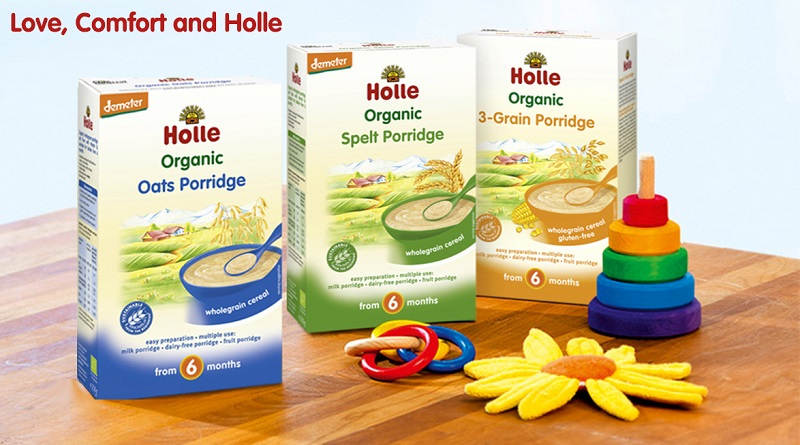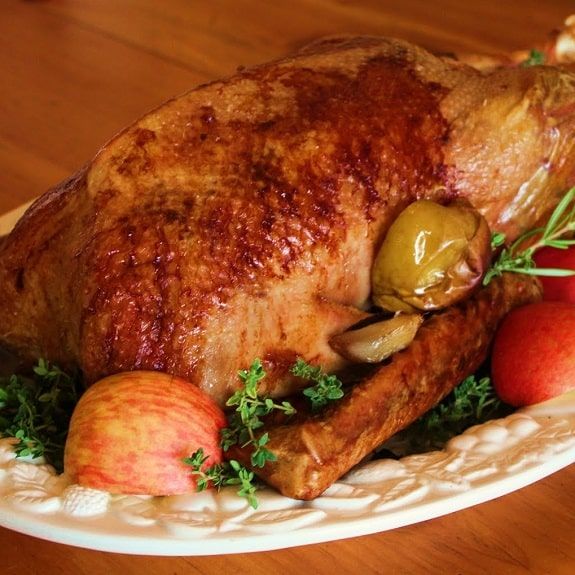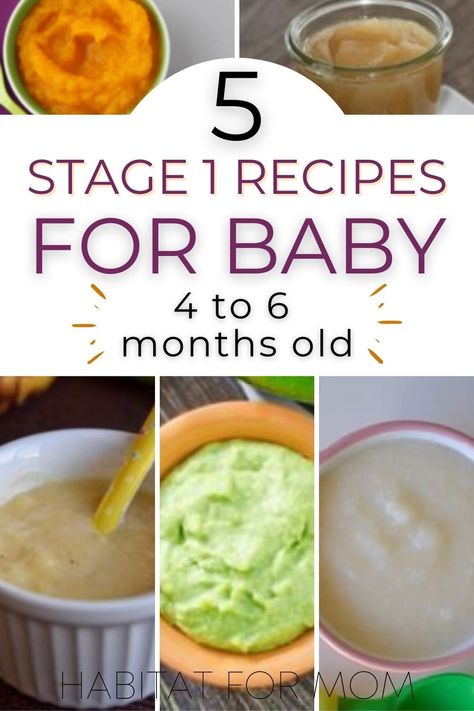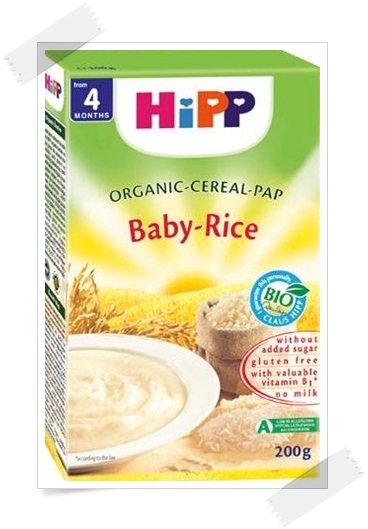First foods to give baby led weaning
Ultimate Guide to Baby Led Weaning (and Best First Foods)
Learn the basics of how to do the feeding approach known as “baby led weaning” and the best first foods for baby to make starting solids easy and fun. Plus: Learn why it’s perfectly okay to use a combined approach of blw and purees.
Baby Led Weaning
The feeding approach known as “baby led weaning” or “BLW” for short, is a style of feeding infants that allows them to feed themselves right from the start. The food is offered in thick finger-size pieces and is soft and easily squishable between your fingers. This way, the food is both easy to hold but has a low risk of choking.
TIP: This method became popular about a decade ago after the publication of the Baby Led Weaning: The Essential Guide to Introducing Solid Food by UK author Gill Rapley.
BLW Baby
One of the many reasons that people are starting to opt for this style of feeding more and more is simply that it’s easy. In many cases, you can modify foods you’re already making to share with your baby and there’s not always a lot of separate cooking involved. It also allows a baby to have control over what goes into their mouths, which sets a good precedent for letting them eat intuitively from the start.
What age should I start baby led weaning?
According to the American Academy of Pediatrics, a baby is ready to start solids with baby led weaning when:
- They’ve doubled their birth weight (at least).
- They can hold their head up well and are starting to sit up unsupported.
- They show signs of being interested in food (watching you eat, reaching for food when you’re eating, etc).
- When you feed them, they are able to move the food around in their mouths—rather than spit it right out.
TIP: Look for a highchair that allows a baby to sit up relatively straight so they can have good posture and better control over their arms and hands.
How to Start Baby Led Weaning
The first time you offer solids is such a fun milestone, so you’ll be ready once you follow these simple steps.
- Make sure baby has hit the milestones listed above to let you know that he’s ready to start.
- Get the highchair ready and adjust the straps and foot rest as needed.
- Plan to introduce water when you start solids. I recommend a trainer cup.
- Choose one food to start with and plan to offer only one food at a time.
- Stop when baby starts to fuss, turns his head away, or shows any other signs of not wanting to continue. It’s usually fairly obvious when they are done!
TIP: If you start offering solids and baby just doesn’t seem interested at all, it’s okay. Take a break for a few days or a few weeks and start again. Each kiddo has their own unique timeline.
Best Tips for Starting BLW
Here are a few more tips to consider and review before you get started.
- Understand the gag reflex. Gagging is different than choking though and is most often a sign that baby is learning to move food around in their mouths—and to get it out of their mouths, which is a skill you want them to have!
- Brush up on the basics of how to know when baby is ready to start solids. (Go back to the top of this post for the signs to look for.)
- Set them up for success with a highchair that allows them to sit up straight and has foot support.
- Sit with them as you offer food.
- Check your own expectations of what will happen and simply allow your baby to take the lead.
- Start with one new food a day or every few days.
- Vary the textures of foods you offer to start exposing baby to many right from the start.
- Offer water in a sippy cup or small open cup.
TIP: Remember that breastmilk or formula will continue to satisfy baby’s hunger for the first few months of eating solids. Do not expect solids to replace milk feedings at this age.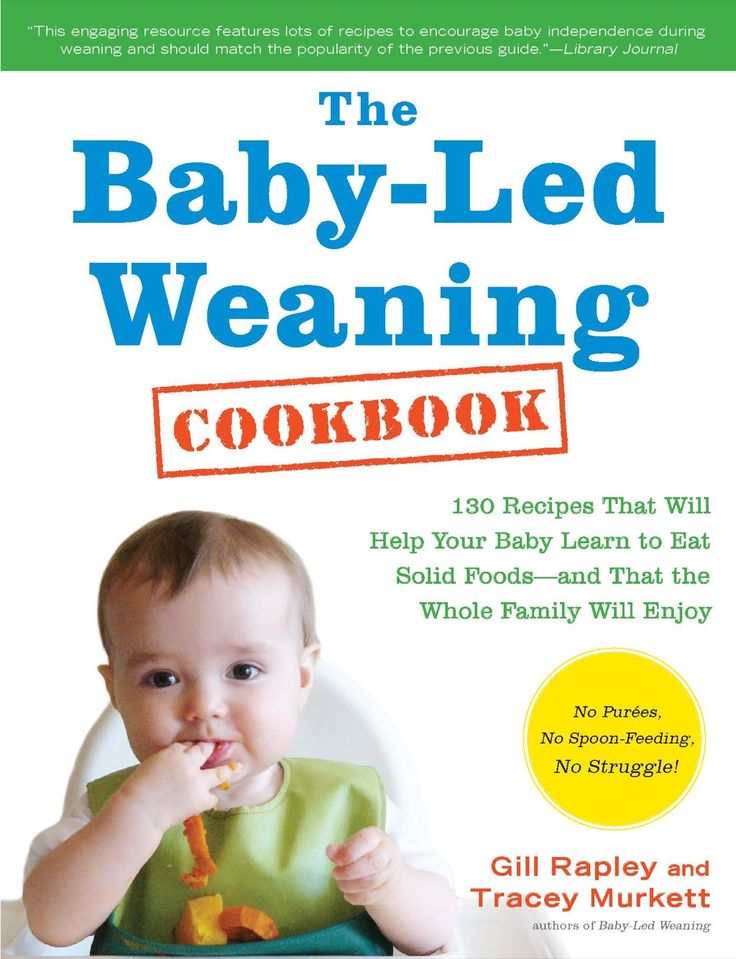
First Foods for Baby
Starting solids with baby led weaning or purees are both perfectly acceptable ways to introduce a baby to solid foods—but the topic can get so heated! There’s a lot of pressure to do it the “right” way and I’m here to say that there isn’t one. You 100% can do one or the other, or combine the two to make it work for your family. It’s all good!
Remember, the goal with first foods for baby is that they’re introduced to flavors, nutrients, and foods they can easily eat or suck on. It should be an enjoyable milestone for all involved.
TIP: It’s a good idea to get into the habit of offering an iron-rich food since iron stores in babies start to run out around 6 months and they’ll need to start ingesting it in their food.
Best First Foods for Baby Led Weaning
Here are some of our favorite first foods to offer baby led weaning style. You want foods to be finger sized so they are large enough that baby can’t force the whole piece into their mouth, and a shape that’s easy for a 6 month old to hold with their chubby little hands. These are some of our favorites.
These are some of our favorites.
- Roasted sweet potato wedges
- Roasted apple wedges, skin on to help them hold together
- Roasted or steamed broccoli florets (big enough for baby to hold)
- Melon slices
- Thick mango slice
- Banana with some of the peel still on
- Toast sticks with mashed avocado
- Avocado spears (make sure the avocado is ripe and soft)
- Lamb or beef, on the bone or a large piece for baby to suck on
- Dark meat chicken, on the bone or a large piece for baby to suck on.
TIP: The foods should generally be soft enough to squish between your fingers with the exception of the large pieces of meat. If baby gnaws a piece down into a smaller piece, replace it with a larger one to avoid her putting a chunk of food into her mouth.
Baby Led Weaning Banana
To serve a banana to a baby, wash it well, then slice it in half. Cut off an inch or two of the peel, but leave the rest of the peel on so it’s not slippery for baby to hold.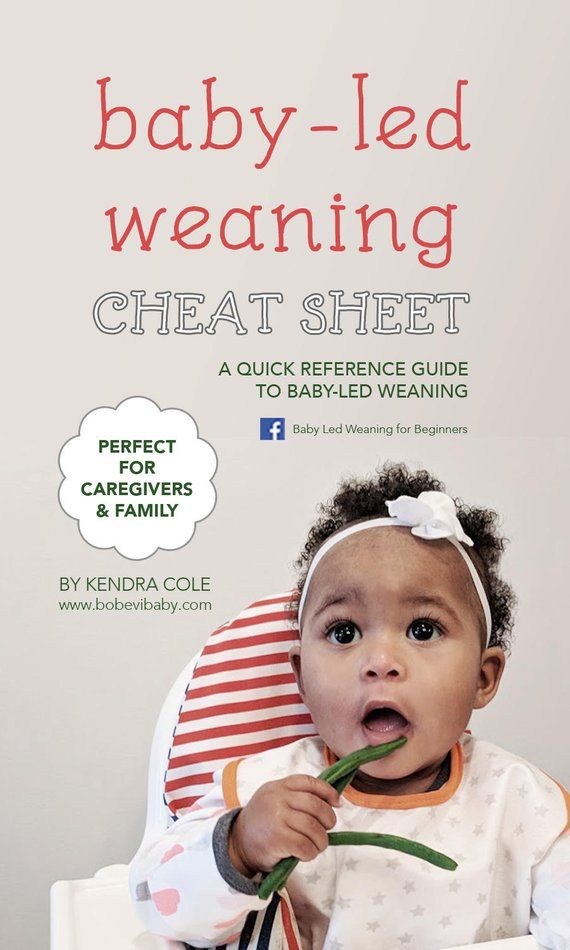 They’ll suck on the top part like a little popsicle! You can also help them hold the banana if needed.
They’ll suck on the top part like a little popsicle! You can also help them hold the banana if needed.
Foods to Avoid Serving While Doing BLW
You want any foods you offer to a baby while doing baby led weaning to be soft enough to squish between your fingers and safe for them to eat and digest. Plan to avoid:
- Anything hard, sticky, or crunchy (like raw apple or carrot, whole nuts, crackers, or a big spoonful or nut butter)
- Added salt
- Cow’s milk (which is difficult for kids under 1 to digest; plain yogurt is fine though)
- Added sugar (they simply don’t need it)
- Honey (to avoid a risk of botulism)
- Super slippery foods that would be hard for baby to hold (which can be frustrating)
TIP: Always sit with your baby and watch them try to eat. They are your best guide for making adjustments to the foods you serve.
Baby Led Weaning and Choking
There are many parents who dislike this method of feeding because it often sounds like a baby is choking. And while there are surely some incidences of choking, what’s more likely is that a baby will occasionally gag on a piece of food that gets into their mouth that they weren’t expecting.
And while there are surely some incidences of choking, what’s more likely is that a baby will occasionally gag on a piece of food that gets into their mouth that they weren’t expecting.
But remember: Gagging is a sign that baby is doing what she needs to in order to move the food around in their mouth as they learn to eat. It usually sounds more dangerous than it actually is.
TIP: If the sound of gagging really freaks you out, you’re not alone. Consider offering more preloaded spoons with purees to start your journey more slowly.
How to Cut Foods for BLW
You generally want the food to be big enough that it would be difficult for baby to put the entire thing into their mouths. Here are some specifics:
- Foods that are roughly the size of a finger, so about a 4-inch stick.
- Foods that are easy for the baby to pick up—they can’t pick up small pieces until closer to 9 months when they develop the ability to use their fingers in what’s known as a “pincer grasp”.

- Foods that aren’t too slippery—so you can wash and leave some of the peel on fresh foods like bananas, avocado, kiwi, and mango.
TIP: You can also go even bigger if you’re worried about size. Think half of a slice of bread or a big chunk of watermelon.
Will my baby actually eat much food with BLW?
Probably not at first. There will likely be more tasting of the food than eating of it and that is totally fine. They will still rely on breast milk or formula at this age for their main nutrition, so don’t expect them to suddenly start eating full meals. (They’ll get there in a few months, but it takes time!)
Do babies need teeth for baby led weaning?
No! Gums are super strong and front teeth aren’t used for chewing—that happens when the back molars come in. Teeth really have nothing to do with whether or not a baby can eat solids.
TIP: Learn more about what to expect from teething here.
Can you mix baby led weaning and purees?
Absolutely! I think it’s a great idea to mix the two methods simply because it gives you many more options for foods and allows the baby to experience more textures.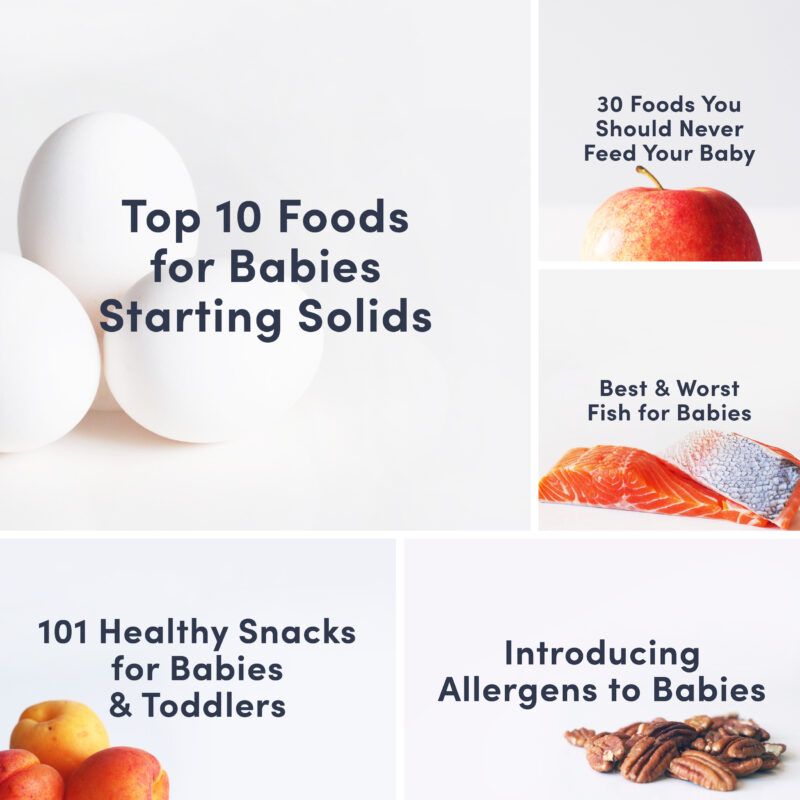 I recommend allowing babies to feed themselves preloaded spoons—so you put the puree on a spoon, then hand it to them to actually put the spoon into their mouth—so they still have control over what goes into their mouths.
I recommend allowing babies to feed themselves preloaded spoons—so you put the puree on a spoon, then hand it to them to actually put the spoon into their mouth—so they still have control over what goes into their mouths.
TIP: Feeding some purees is also helpful if you’ll be sending food with a baby to daycare since the care provider may not have experience with blw.
Best First Foods for Baby: Purees
Here are some of our favorite purees to start offering baby when they’re ready to start solids. Remember: There’s no evidence that says that you need to start with vegetables versus fruits, so go with something that tastes good to you. Start with single foods pureed smooth and offer just a little at a time on a spoon.
- Mashed roasted sweet potato puree
- Mashed avocado puree
- Mashed banana puree
- Butternut squash puree
- Applesauce, unsweetened
- Mashed pea puree
- Oatmeal baby cereal (with added iron)
TIP: One of my favorite baby food companies is Amara Organic Baby Food, a company using a nutrient protection technology that makes organic purees just as good as homemade.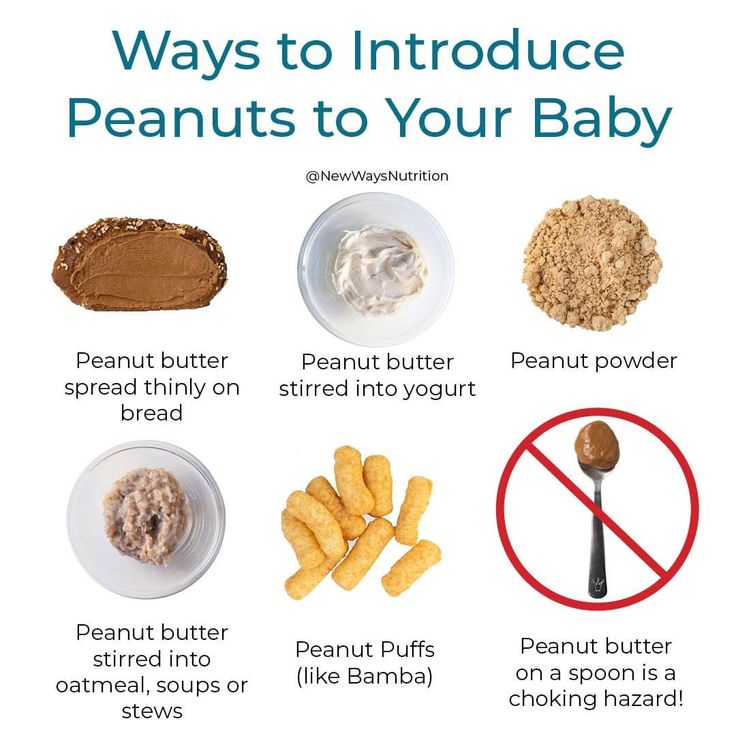 I love how easy they are to use when I need a shortcut and that they have fun baby-led weaning recipes on the side of every box! (paid affiliate link)
I love how easy they are to use when I need a shortcut and that they have fun baby-led weaning recipes on the side of every box! (paid affiliate link)
How do I know when baby has had enough?
If your baby is eating and then starts to turn her head away or just refuses to open her mouth, she’s done! Babies may also start to fuss if they’ve had enough. Learning this new skill takes time and babies can become tired fairly quickly into the process, so don’t expect them to always eat very much or to last very long at the table. This stage is about exploration!
Baby with preloaded spoon of yogurtHow to Let Baby Self Feed Purees
I love offering purees on a preloaded spoon. To do this, the parent, puts some of the food on the spoon and hands it to baby. Then baby can bring the food to their mouth all by themselves. This gives you some of the same advantages of baby led weaning, but can be more comfortable for many parents.
Remember, you can mix what you offer, going back and forth between purees and blw finger foods, so you can offer the same food two different ways to let baby explore.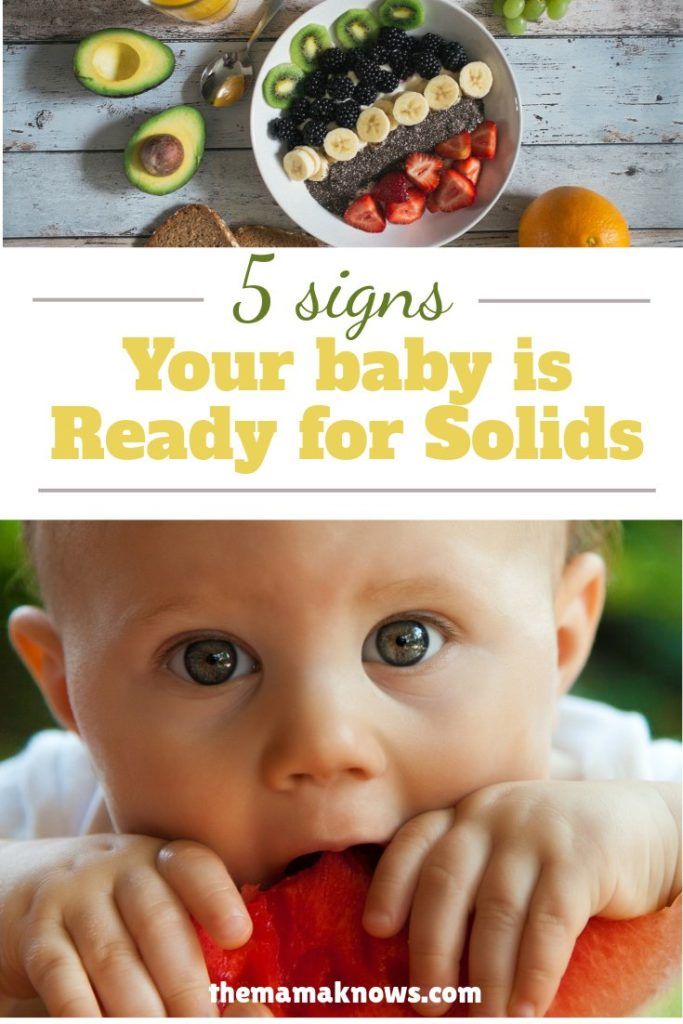 The main goal is to avoid forcing baby to take more bites than they want to, which can sometimes happen with purees.
The main goal is to avoid forcing baby to take more bites than they want to, which can sometimes happen with purees.
When to Introduce Potentially Allergenic Foods
In recent years, guidelines have been updated on when to introduce potential allergens including peanuts, eggs, and shellfish, so unless you have a family history of a food allergy, you can go ahead and introduce them soon after baby starts eating solids. In fact, research is showing that introducing these foods early can actually protect baby from developing an allergy. Talk to your pediatrician if you have concerns.
TIP: Thin unsweetened peanut butter with water to form a very thin Peanut Butter Puree until it’s about the consistency of regular yogurt and offer a very small amount on a spoon or spread on a toast stick.
What does a baby led weaning meal look like for months 7 and 8?
Until a baby is closer to 9 months and is able to pick up smaller pieces of foods, but after they have gotten the hang of one food at a time, I try to offer 1-2 foods they can feed themselves and one puree. This offers them a chance to ingest more via the puree but still feed themselves a range of textures. You can do more or less food following the lead of the child.
This offers them a chance to ingest more via the puree but still feed themselves a range of textures. You can do more or less food following the lead of the child.
TIP: My Baby Food Chart has loads of with ideas for blw foods and purees by month.
Recipes for Every Stage of Starting Solids
If you’re ready to start solids with baby, or you’re just curious what it looks like to do a mix of baby led weaning and purees, check out my Yummy Baby Food cookbook. It goes stage by stage with specific foods to start in each, with simple recipes and easy feeding tips.
Listen to a recent podcast episode to hear about some of the basics of BLW with our guest Megan McNamee, MPH, RDN, CLT, and a Registered Dietitian Nutritionist specializing in pediatric nutrition who runs Feeding Littles.
I’d love to hear any questions you have with BLW or if your baby had a first food that I didn’t list here. Please comment below to share your experience!
Prep Time 5 minutes
Total Time 5 minutes
Author Amy Palanjian
Cuisine American
Course Dinner
Calories 28kcal
Servings 1
Banana
- ▢ 1 small ripe banana with peel on
Roasted Sweet Potato
- ▢ 1 small sweet potato + 1 teaspoon olive oil
Roasted Apple
- ▢ 1 small apple + 1 teaspoon butter or neutral oil
Roasted Broccoli
- ▢ 1 cup broccoli florets + 1 teaspoon olive oil
Sauteed Green Beans
- ▢ 4 green beans 1 teaspoon olive oil
Melon
- ▢ 1 small piece watermelon or cantaloupe
Avocado Toast
- ▢ 1 slice whole grain bread
- ▢ 1 tbsp ripe avocado
Avocado Spear
- ▢ ⅛ ripe avocado
Lamb or Beef
- ▢ 1 lamb chop, roast, or steak
Pan-Seared Chicken Thighs
- ▢ 1 chicken thigh
- ▢ 1 tsp olive oil
- ▢ 1 garlic clove, optional
Banana with some of the peel still on
Cut a banana in half.
 Use a knife to gently cut around the peel about 2 inches down, leaving some of the peel on so that the banana is easy for baby to hold and less slippery.
Use a knife to gently cut around the peel about 2 inches down, leaving some of the peel on so that the banana is easy for baby to hold and less slippery.
Roasted Sweet Potato Wedges
Preheat oven to 400 degrees and line a rimmed baking sheet with foil. Wash and dry the sweet potato. (You don't need to peel it.) Cut in half, then cut lengthwise into strips. Cut each strip in half again until each is about 1/2-inch thick. Slice in half horizontally if the sweet potato is very long. (Each strip should be about the size of your finger.) Place into a bowl and toss with the olive oil. Spread onto prepared baking sheet and roast for 22-25 minutes or until soft. Let cool slightly and serve.
Roasted Apple Wedges
Roasted Broccoli Florets
Preheat the oven to 400 degrees F. Place the broccoli onto a rimmed baking sheet and toss with the olive oil, coating and mixing well until all of the florets are a little shiny and coated with oil.
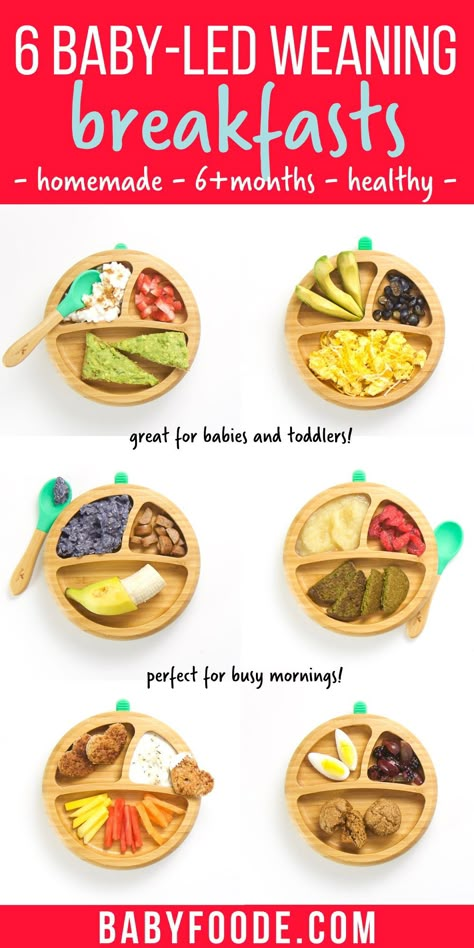 Roast for 15-18 minutes or until tender. Let cool slightly and serve.
Roast for 15-18 minutes or until tender. Let cool slightly and serve.
Sauteed Green Beans
Warm the oil in a large skillet over medium heat. Add the green beans and stir. Cover and cook for about 8 minutes. Remove cover and taste one to see if it’s soft enough. Cook for an additional minute or two as needed.
Melon slices
Avocado Toast
Avocado Spears
(Make sure the avocado is ripe and soft): Cut a thick strip of avocado and offer to baby. You can leave the peel on if that makes it easier for baby to hold (just wash it first).
Lamb or Beef
Prepare a roast, steak, or chop without salt and with butter or olive oil until cooked medium well. Offer a thick slice at least the size of your finger or a drumstick.
Pan-Seared Chicken Thighs
Warm 1 tablespoon olive oil or butter in a large skillet over medium heat. Add the chicken thigh and top with a few slices of fresh garlic, if desired.
 Cover and cook for 4-5 minutes. Remove cover. Flip over and cook for an additional 4-5 minutes uncovered or until a meat thermometer registers 165 degrees F.
Cover and cook for 4-5 minutes. Remove cover. Flip over and cook for an additional 4-5 minutes uncovered or until a meat thermometer registers 165 degrees F.
- Add spices like garlic powder, cinnamon, cumin, oregano, or any other non-spicy flavor you like to make these more interesting.
- Offer just one piece at a time when starting out.
- If baby gnaws a piece down into a smaller piece, replace it with a larger one to avoid her putting a chunk of food into her mouth.
- Store any leftovers in an airtight container in the fridge for 3-5 days. Reheat briefly if needed.
- Remember that it's normal for babies to take time to actually ingest the food. Part of the process is exploring all of the senses related to the experience of eating.
Calories: 28kcal, Carbohydrates: 2g, Protein: 1g, Fat: 2g, Saturated Fat: 1g, Polyunsaturated Fat: 1g, Monounsaturated Fat: 2g, Sodium: 6mg, Potassium: 75mg, Fiber: 1g, Sugar: 1g, Vitamin A: 23IU, Vitamin C: 2mg, Calcium: 2mg, Iron: 1mg
Tried this recipe?Rate in the comments and tag @yummytoddlerfood on IG!
Printable Baby Food Chart: BLW, Purees, Finger Foods
Make feeding your baby easier with this free, downloadable baby food chart. It has straight forward ideas for what to feed baby from when they start solids on up to one year—including purees, baby-led weaning style foods, finger foods, and more.
It has straight forward ideas for what to feed baby from when they start solids on up to one year—including purees, baby-led weaning style foods, finger foods, and more.
Baby Food Chart
Starting solids with a baby can be so fun and often a little challenging—but this baby food chart will help. I’ve compiled my best ideas for which foods to serve based on age and development of the baby to make it easy for you to make decisions in the kitchen.
This infant feeding chart is meant to help remind you of options you have at each age. It is not meant to add any pressure or function as a checklist of foods you have to serve (unless you want to do that!).
TIP: Download your free printable baby food chart here.
What baby foods should you start with?
Whether you start with purees or baby led weaning, starting with flavorful and nutrient-dense foods is a simple way to think about introducing foods to a baby. I love simple foods like roasted sweet potato, avocado, banana, and apple puree as first foods for a baby.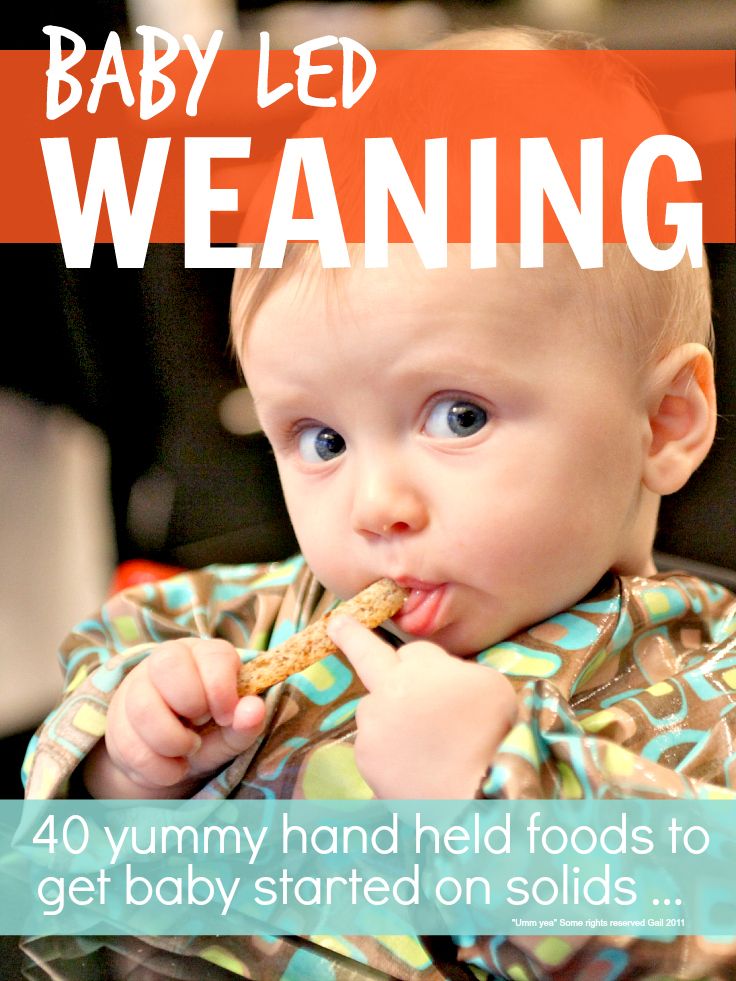
Remember that a first food is just that—a first food. It is not going to be the sole thing that determines how your child likes all foods. It can be sweet or savory, or from a variety of food groups. I would do your best to make sure that the food is easy to eat, has some flavor, and that the environment in which you offer it is free from pressure and, maybe even joyful!
What age should baby start eating foods?
The American Academy of Pediatrics recommends waiting to start solids until a baby is 6 months, and to go with wide variety of foods, introduced one at a time. But many pediatricians still say it’s okay to start rice cereal at 4 months.
If your pediatrician recommends this at the 4 month check up, ask their thoughts on the recommendation from the AAP.
TIP: Learn more about starting solids here.
How much food should I feed my baby?
The best way to know the right amount of food to give to a baby is to follow their lead. It should be very clear when a baby is done eating—they will close their mouth, turn their head, and generally make it very hard to feed them. (They may also play with their food, which is a fine way for them to interact with the foods at this early stage.)
It should be very clear when a baby is done eating—they will close their mouth, turn their head, and generally make it very hard to feed them. (They may also play with their food, which is a fine way for them to interact with the foods at this early stage.)
It’s okay if baby eats very little to start. It’s also okay if they surprise you by being very interested in food!
TIP: Download your free printable baby food chart here.
6 Month Baby Food Chart for Purees
If you’re ready to start solids with a baby, here are some foods you may want to start with. This list is perhaps more broad than you expect, but more recent research shows that it’s a good idea to introduce potential allergenic foods earlier and that lots of flavor is a great way to set baby up for eating a range of foods as they grow.
Don’t feel like you need to serve all of these foods (you 100% don’t!), but it should give you a range of ideas to consider based on season, availability, and your own preference.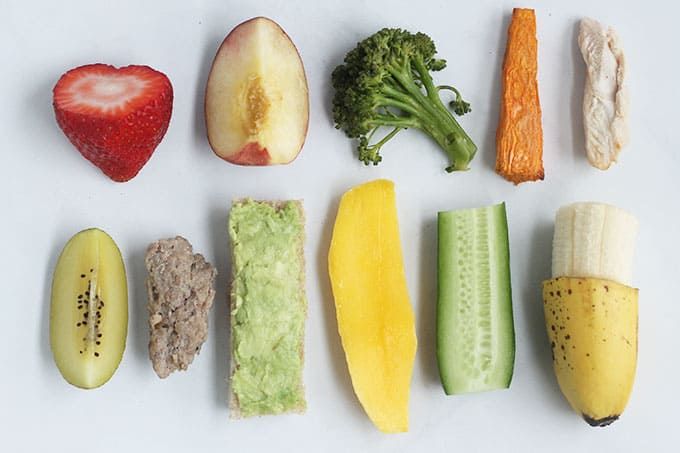
- Almond butter puree
- Apple Puree
- Avocado puree
- Banana puree
- Baby oatmeal
- Bean puree
- Butternut squash puree
- Egg yolk, hard cooked mashed with water
- Green bean puree
- Melon puree
- Pea puree
- Peach puree
- Peanut Butter Puree
- Pear puree
- Pumpkin puree
- Sweet potato puree
- Whole milk plain yogurt
- Single ingredient baby food
TIP: Find more in depth details on how to know if your baby is ready to start solids here.
6 Month Baby Food Chart for Baby Led Weaning
If you decide to use the baby led weaning method of feeding, you’ll want to cut these foods into the shape of a finger or larger. The foods should also be soft and easily squishable between two fingers—like the texture of a roasted sweet potato wedge or ripe avocado.
You don’t need to feel like you have to serve all of these foods by any means, but it should give you a range of ideas.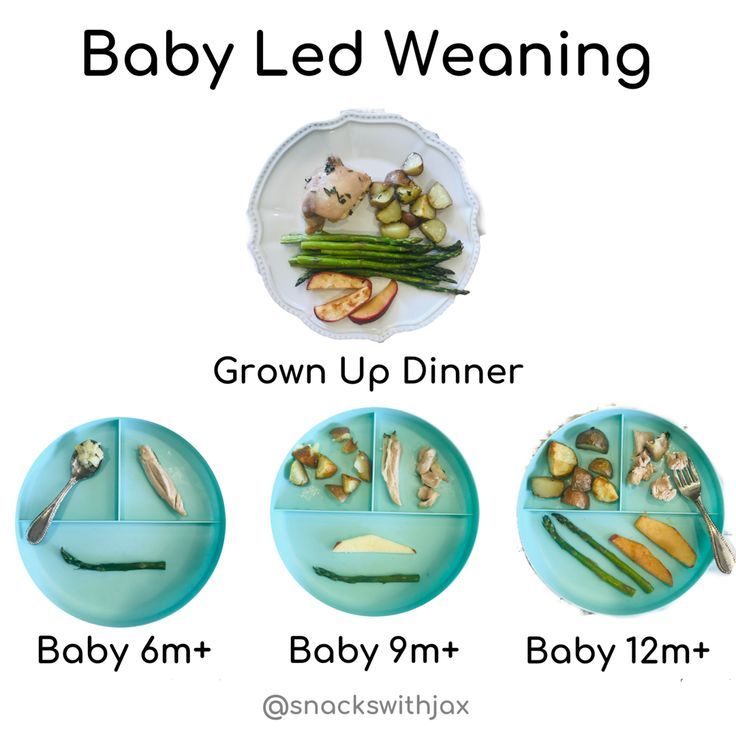
- Apple, roasted wedge
- Avocado spears
- Banana
- Beef, ground (large piece)
- Beef hamburger patty (sliced)
- Beet, steamed or roasted
- Broccoli florets, roasted/steamed
- Cauliflower florets, roasted/steamed
- Chicken, dark meat shredded
- Cucumber
- Green bean
- Egg, hard cooked
- Egg in omelet, sliced
- Figs, halved
- Lamb
- Mango slice
- Meatball
- Melon slices
- Peach, very ripe slice
- Pear, very ripe slice
- Potato, roasted wedges
- Steak slice
- Sweet potato, roasted wedges
- Toast with mashed avocado
- Toast with mashed sweet potato
- Toast with light smear of peanut butter
- Toast with mashed hard cooked egg
- Watermelon slice
- WiId salmon
TIP: Find my Ultimate Guide to Baby Led Weaning here.
7 Month Baby Food Chart
With a 7 month old baby, you can add in a few more foods including those with more acid like citrus. Continue serving the foods on the 6th month list, or introduce ones that you didn’t get to in that first month.
Continue serving the foods on the 6th month list, or introduce ones that you didn’t get to in that first month.
- Baby rice crackers
- Bean puree
- Beet puree
- Brussels Sprouts, pureed (or large piece for BLW)
- Guacamole
- Kiwi puree (or large piece for BLW)
- Hummus
- Mango Puree
- Mixed ingredient baby foods
- Orange segment for BLW
- Pineapple puree (or large piece for BLW)
- Prune puree
- Strawberry puree (or large strawberry for BLW)
- Spinach puree
- Smoothies (simple)
- Tomato sauce
- Tomato sauce with ground meat
TIP: Try my 10 easy No Cook Baby Foods.
9 Month Baby Food Chart
As a baby nears the 9 and 10 month mark, they will begin to be able to pick up small, pea-size pieces of foods with their fingers. This development of the “pincer grasp” means they are ready to start sampling table foods.
A good rule of thumb is to cut foods to about the size of a pea and to serve them very soft and easily squishable between your fingers.
Bread-like textures in foods like pancakes and muffins may be difficult for your child, so you may want to moisten them with water, applesauce, yogurt, breastmilk, or formula.
Remember that babies learn to eat a variety of paces, so follow the lead of your baby and avoid pressuring them to eat foods or amounts of foods that they aren’t ready for. If a baby turns their head away, closes their mouth, shakes their head, or cries, they are done with food and it’s okay to end the meal.
Continue serving foods from the previous months. And try adding:
- Banana, diced and mashed slightly as needed
- Barley, cooked until very soft
- Beans, slightly mashed
- Beef, ground
- Blueberries, diced
- Cheese, shredded
- Chex cereal
- Chia seed in smoothies, yogurt or oatmeal
- Chicken, ground
- Chicken, shredded and chopped into small pieces
- Clementines, diced (you may want to remove the slightly tough membrane)
- Cottage cheese
- Corn
- Flaxseed in smoothies, yogurt or oatmeal
- Goat cheese, soft crumbles
- Grapes, diced (never whole)
- Kefir, plain
- Meatball, diced
- Muffins, diced (moistened if needed)
- Millet
- O cereal
- Oatmeal
- Overnight oats
- Pasta
- Peas
- Potatoes, roasted or mashed
- Puffs
- Raspberries, diced
- Pancake, diced (moistened as needed with applesauce)
- Quinoa
- Rice
- Salmon, small pieces
- Tofu, diced
- Tomatoes, fresh
- Tilapia, small pieces
- Turkey, ground
TIP: Find my best Early Finger Foods, which will cover this stage and early toddlerhood.
Best First Finger Foods for Baby
I put together my go-to first finger foods for babies, which may help you narrow down which foods to start with. Each of these is a nutritious whole food that’s soft and easy for baby to eat. It’s helpful that many of these foods are ones that us grownups like too, so it should make meal planning and prep for the little ones easier on you!
Printable Baby Food Chart
Grab your free copy of my downloadable Baby Food Chart with access to my entire Resource Library of Printable charts by signing up for my newsletter.
You May Also Like
- ABC Baby Muffins
- Master List of Baby Snacks
- Extra-Veggie Baby Soup
- Sweet Potato Teething Biscuits
- Master List of Baby Food Recipes
I’d love to hear your feedback on this chart, so please comment below! I always love to hear from you guys.
This post was first published Jan 2019.
11 Weaning Foods and Foods to Avoid - Drink-Drink
Around 6 months of age, babies awaken their taste buds by adding foods to their breast milk or formula based diet. Many caregivers look forward to seeing how their children react to a variety of new colors, textures and flavors.
Many caregivers look forward to seeing how their children react to a variety of new colors, textures and flavors.
Babies can be spoon fed baby puree, which is the typical approach in Western society, or they can be fed using the weaning method (BLW).
BLW is characterized by infants eating small pieces of soft food that they can take on their own. Proponents of this method claim that it offers benefits such as improved appetite regulation and motor skills.1).
This article presents the best and worst complementary foods.
1. Avocado
Avocado is a fruit known for its high nutritional value. They are ideal food for children and adults. It's no secret that babies grow fast in their first year of life and need adequate nutrition to do so.
This easily puréed fruit is generally renowned for its healthy fat content, but it is also rich in fiber, potassium, folic acid, copper and vitamin E (2).
Only 5% of Americans meet their daily fiber intake (AI). This nutrient is known to improve digestion and help reduce the risk of certain chronic diseases, including cancer, diabetes, and heart disease.3).
This nutrient is known to improve digestion and help reduce the risk of certain chronic diseases, including cancer, diabetes, and heart disease.3).
In a study in young children, those who consumed high amounts of fiber also consumed more key brain-boosting nutrients, including iron, folic acid, and vitamin B6. So feeding your child avocados and other fiber-rich foods will provide them with many beneficial nutrients (4).
- 6-8 months: Cut a ripe avocado into slices the width of an adult's finger for easier gripping.
- 9-12 months: Cut a ripe avocado into small cubes or pieces.
2. Yogurt
While not necessarily a problem-free option for your child, yogurt is a palatable food with calcium, protein, and gut health benefits. Yogurt is a fermented milk product, which means it contains healthy probiotic bacteria cultures such as Lactobacillus (5).
Probiotics play a significant role in digestive health and may help young children who experience tummy problems such as diarrhea and constipation.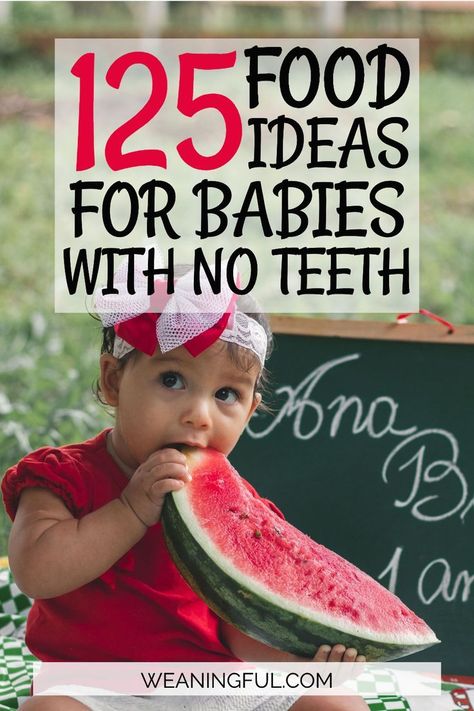 6, 7).
6, 7).
For example, in a 2019 study of 82,485 Japanese infants conducted in 3 years, researchers found that eating yogurt at least
times a week significantly reduced the risk of stomach inflammation.8).
Whole milk yogurt comes in a variety of flavors that can be sweetened with sugar. The 2020-2025 Dietary Guidelines for Americans recommend that children under age 2 avoid added sugar (9).
The American Heart Association also discourages the addition of sugar to young children because increased intake of added sugar may increase the risk of heart disease by increasing blood pressure and triglycerides.10, 11).
Unsweetened whole milk yogurt is therefore the best option for infants.
3. Eggs
Not only are they affordable and easy to prepare, eggs are also rich in nutrients such as protein, vitamins D and A and choline. In fact, eggs are one of the main sources of dietary choline, which is essential for infant brain and eye development.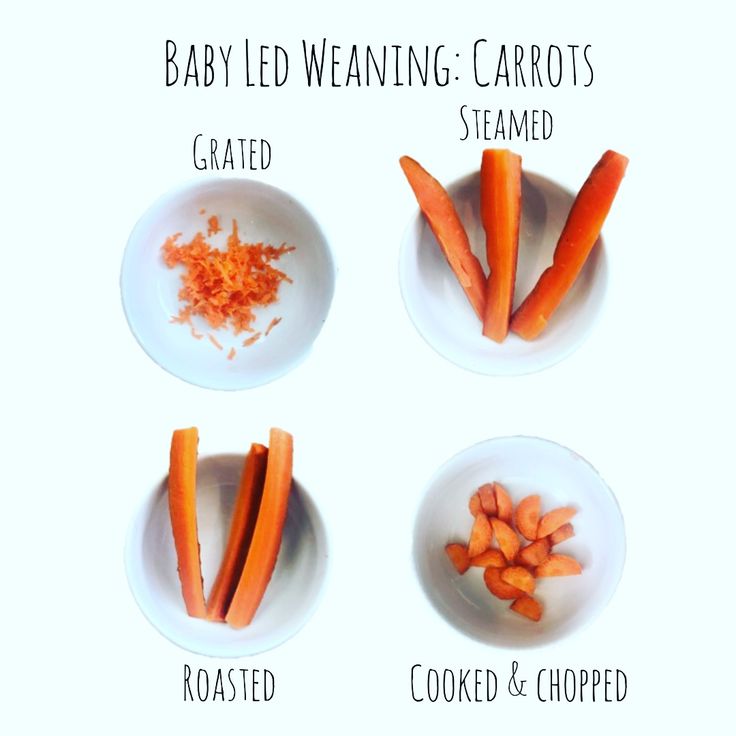 12).
12).
Studies show that choline levels are positively associated with children's academic achievement and information processing speed in infants.12, 13).
Please note that it is very important to offer children only fully cooked eggs to reduce the risk of food poisoning. Salmonella exposure.
Salmonella is a bacteria found in many foods, including eggs, that can cause illness if contaminated food is not properly cooked before eating. Babies are at high risk for food poisoning symptoms due to their naturally weak immune systems (14).
You can tell that an egg is hard-boiled and safe for your baby if it is cooked until the yellow and white parts of the egg are firm (15).
- 6-8 months: Bring water to a boil and boil hard-boiled eggs for 15 minutes. Cut the egg into quarters or strips.
- 9-12 months: Bring water to a boil and boil hard-boiled eggs for 15 minutes. Slice the egg.
 You can also shake the egg and cut it into small pieces.
You can also shake the egg and cut it into small pieces.
4. Carrots
Carrots come in a variety of colors, including orange, yellow and purple, with each color containing unique nutrients.
Carotenoids are a type of nutrient that is converted into vitamin A in the body. Thus, carrots provide children with vitamin A, an important vitamin for keeping the immune system in good shape.16, 17).
Specifically, lutein is a carotenoid found in carrots. It helps with vision and may promote brain growth (18, 19).
- 6-8 months: Peel and cut carrots into strips the width of an adult's finger. Steam or boil the carrot sticks until soft.
- 9-12 months: Peel and cut carrots. Steam or boil until soft.
5. Tofu
Tofu is a calcium-rich soft plant food that is great for kids.
One slice of tofu provides 10% of your child's daily value of calcium. Babies rely on this mineral to develop and maintain healthy bones (20, 21).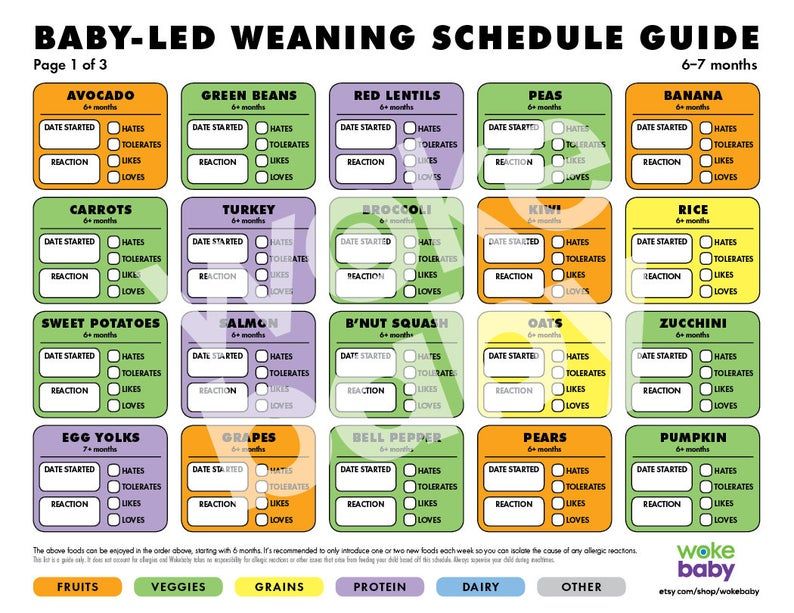
- 6-8 months: Follow package directions to squeeze out excess water. Cut into wide sticks that the child can take. Reheat the sticks by placing them in the microwave for 10 seconds, or fry them lightly in a skillet until they are slightly crispy to grip.
- 9-12 months: Follow package directions to squeeze out excess water. Cut into bite size cubes your child can pick up. Reheat the cubes by placing them in the microwave for 10 seconds, or fry them lightly in a pan.
6. Meat and fish
Some parents are wary of giving their children meat and fish and are considering postponing the introduction of these foods. However, rest assured that children can get tons of nutritional benefits from these protein-rich foods.
Meat and fish are important for children as they contain essential nutrients for growth and development, including easily digestible iron, vitamin A, vitamins B6 and B12, and zinc. (22, 23).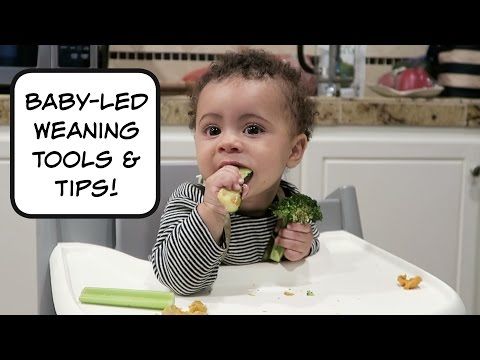
Because BLW can lead to decreased iron intake, parents using BLW are encouraged to add iron-rich foods to every meal (22, 23).
Other sources of iron include lentils, spinach and fortified breakfast cereals (24).
Zinc plays an important role in the functioning of the brain, the development of the nervous system and memory. Older children are at higher risk of zinc deficiency as their zinc requirement increases with age (25).
Meat and fish are the main sources of zinc. If your family is on a vegetarian diet, oatmeal, ground chia seeds, and brown rice are other sources of zinc for older children (26).
- 6–8 months: Offer fully cooked, tender, finely chopped chicken, turkey, beef, salmon, or pork.
- 9-12 months: Offer fully cooked shredded or minced meat or small pieces of salmon.
7. apples
BLW-style babies can eat apples to meet their vitamin C needs.
Foods rich in vitamin C help the baby's body absorb iron from iron-containing foods.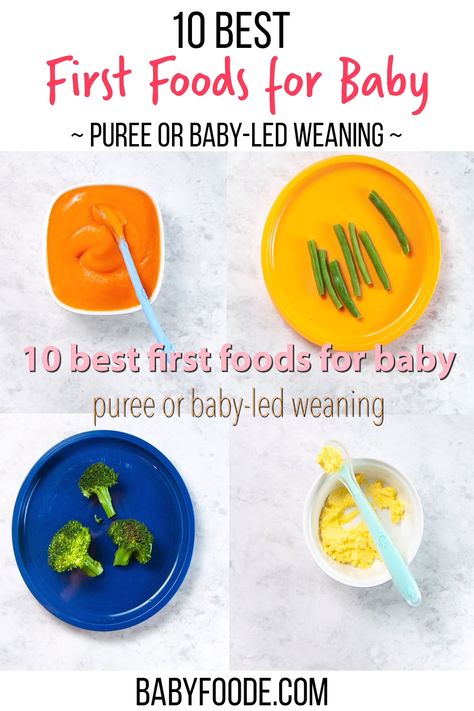 In addition, if infants do not get enough vitamin C in their diet, they are at risk for connective tissue problems due to a condition called scurvy.27,28,29).
In addition, if infants do not get enough vitamin C in their diet, they are at risk for connective tissue problems due to a condition called scurvy.27,28,29).
- 6-8 months old: Peel, cut and boil apples until soft. Sprinkle with a pinch of cinnamon.
- 9-12 months: Offer peeled, grated raw apples to older children.
8. Sweet Potato
A popular root vegetable, sweet potatoes are a favorite baby food and are easy to make.
Sweet potatoes contain fiber, an essential nutrient for healthy digestion. In fact, low fiber intake has been linked to constipation, so sweet potatoes can help keep your child comfortable with regularity (30, 31).
- 6-8 months: Prepare a whole sweet potato. Peel and cut into strips the width of an adult's finger.
- 9-12 months: Prepare a whole sweet potato. Peel and cut into small pieces that a child can pick up.
9.
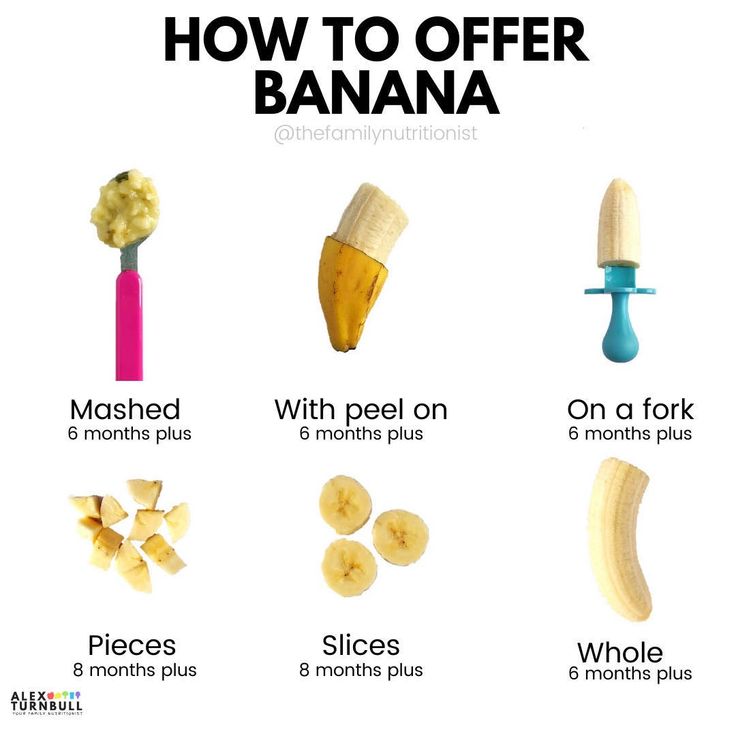 Oats
Oats Oats are a whole grain rich in fiber, copper, selenium, zinc and many other nutrients critical to immune function and gut health. Infants generally tolerate cereals such as oats well because of their texture, mild flavor, and ease of eating.32,33).
- 6-8 months: Use breast milk or iron-fortified cereals to make baby oatmeal. To serve oats cold, blend or grind them and mix with unsweetened yogurt or applesauce.
- 9-12 months: Make homemade oatmeal muffins and cut them into portions.
10. Walnut oil.
The American Academy of Pediatrics (AAP) recommends offering foods with potential allergens such as peanuts and tree nuts during infancy. Early exposure to potential food allergens may reduce the risk of food allergies in infants as young as 4 months of age.34).
Nut butters such as peanut, almond and cashew butters are high in protein and are easy to combine with many other foods. Babies should get enough protein in their diet to support bone growth and muscle strength (35, 36).
Choose natural peanut butter to avoid hydrogenated oils and added sugars, which tend to be less healthy.
Monitor your child for potential food allergy symptoms such as (37):
- wheezing
- nausea
- hives
- vomiting
- diarrhea
If you suspect your child may have a food allergy, seek immediate medical attention.
- 6-8 months: Mix a small amount of natural nut butter with yogurt or oatmeal. To reduce the risk of choking, avoid using crunchy nut butter.
- 9-12 months: Spread a thin layer of nut butter on toast or crackers. To reduce the risk of choking, avoid using crunchy nut butter.
11. Safe liquids
Even when your child is trying new foods, it is also important to give him plenty of fluids to keep him nourished and hydrated.
Breast milk remains the best source of nutrition for babies. If breast milk is not available, iron-fortified formula is the best alternative food source for healthy growth and development.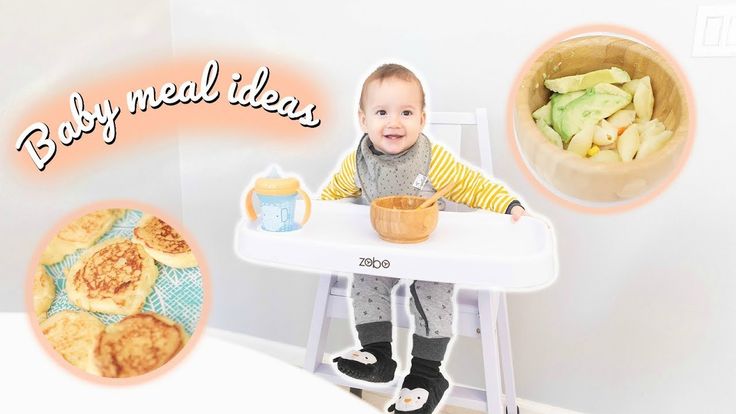 Infants need breast milk or formula from birth until about 12 months of age (38).
Infants need breast milk or formula from birth until about 12 months of age (38).
In addition, according to the AAP, children at least 6 months of age can safely drink 4–8 ounces of plain water per day (39).
Conclusion
BLW foods that are safe for your baby include boiled eggs, oats, sweet potatoes, carrots, and nut butter. Be sure to properly prepare and cut food to ensure safety.
Foods to avoid when weaning a baby
Some foods are unsafe for babies and should be avoided to reduce health risks.
Unsafe foods that can cause serious illness
It is best not to give honey and corn syrup to children under 1 year old because these foods can be contaminated Clostridium botulinum , a harmful bacteria known to produce toxins that can cause paralysis in children (40).
Similarly, unpasteurized meat and dairy products can lead to life-threatening infections if they contain harmful bacteria such as listeriosis . If you plan to give meat or dairy products to babies, be sure to purchase foods clearly labeled “pasteurized” (41).
If you plan to give meat or dairy products to babies, be sure to purchase foods clearly labeled “pasteurized” (41).
From about 1 year old, children have increased immunity and improved gut health to fight disease (42).
It is also very important not to give your child fish with a high mercury content. These include predatory fish such as swordfish, shark and orange bighead. Mercury is a heavy metal that can harm a child's developing brain, spine, and nervous system (43, 44).
Instead, it is safe to offer your child small amounts of low-mercury fish such as salmon, light tuna and cod once or twice a week (43, 44).
Foods that can cause choking
To reduce the risk of choking, do not give your child the following foods:
- Sticky foods: marshmallows, gummies, candies, large amounts of thick nut butter
- Round or coin-shaped foods: grapes, cherry tomatoes, hot dogs, hard candies
- Raw foods: stalks of broccoli or cauliflower, carrots, raw apples - unless crushed for older children
- whole nuts
Unsafe liquids for babies
Babies under 12 months old should not consume cow's milk because their kidneys and digestive systems may have problems processing the minerals and proteins it contains (9).
In addition, the AAP recommends delaying juice until 12 months of age to prevent tooth decay (45).
Conclusion
To keep your child safe and healthy, avoid potentially harmful foods and liquids such as honey, corn syrup, unpasteurized meats and dairy products; products that can cause choking; cow's milk; and juice.
Bottom line
Babies can eat a wide variety of foods during the weaning process (BLW) starting at about 6 months of age.
Avocados, yogurt, tofu, eggs, carrots, meat and fish, apples, sweet potatoes and oats can provide your child with the nutrients they need for rapid growth and development.
Your child's age and developmental stage will determine how you prepare these foods. As a general rule, favor well-cooked food over raw food.
Because babies are at risk of food poisoning and choking, be aware and informed about foods and liquids to avoid in infancy, including honey, round foods, and foods that are difficult to chew.
Just One
Try This Today: Read this article to learn more about the benefits of BLW and what other foods can help you and your child get off to a good start.
Regular weaning
Reviewer Kovtun Tatiana Anatolievna
62696 views
September 15, 2021
Login or register to save articles and products as favorites
Sooner or later, the time comes when it's time to wean the baby from the breast. And it doesn’t matter whether this happens when the child is already more than a year old or even two years old, the involution just began, or, for medical and other reasons, breastfeeding (HB) has to be curtailed at an earlier age of the baby. The most important thing is to do everything right.
The most important thing is to do everything right.
How? We will tell you now.
First and foremost rule: Weaning must be gradual!
Previously, it was customary to curtail breastfeeding in a very simple way: the child was given to the grandmother for a week, and he returned to his mother already weaned. At least that's what the legends say. In fact, this method is dangerous for both mom and baby.
Mom can earn lactostasis and, as a result, mastitis, and the baby gets into a strong stressful situation and for him this is indeed a trauma for life. Not only was the chest taken away, but also the main person in life disappeared somewhere and left him.
An easy way to stop feeding after a nap is to get out of bed a little earlier than the baby. And when he wakes up, instead of the chest, invite him to hug, fly on an "airplane" or just cuddle.
Rule two: You can not wean the baby from the breast when he is sick or just starting to recover.
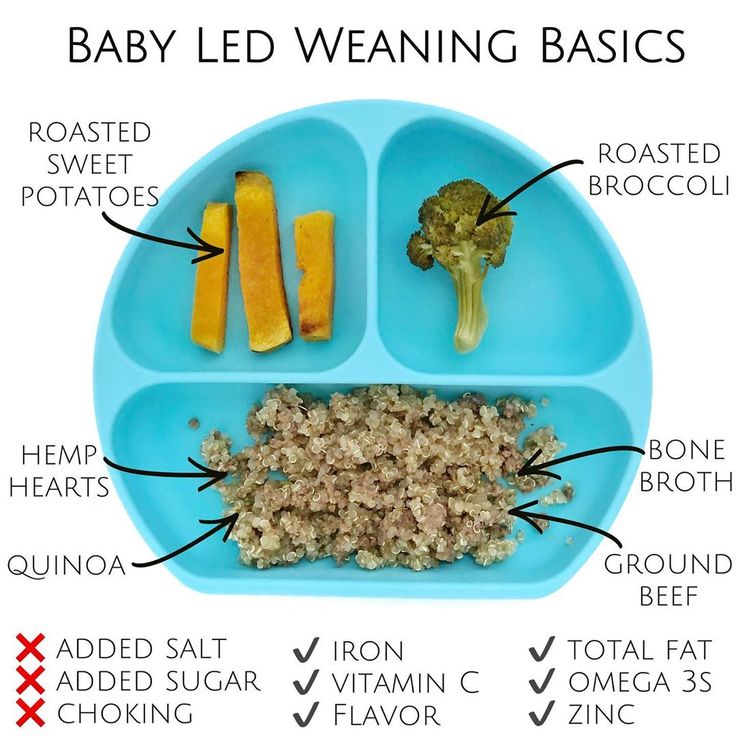
Mom's milk is medicine. Breast milk contains immunoglobulins and antibodies that help the baby's immunity to overcome the disease. This time. During an illness, a drinking regimen is very important for a child - breast milk is the best option. This is two. During illness, babies often act up. Breastfeeding is the easiest and most natural way to soothe your baby. It's three.
Rule three: No specific deadlines!
Even if you are a perfectionist to the core and plan everything in advance, in the case of weaning, this number will not work. You can expect to meet within a month, but the child may need more time. As a result, someone will be dissatisfied. It shouldn't be like that.
Rule Four: Weaning and stress are incompatible!
If the child has to go to kindergarten, the family has to move or the birth of a second (third) child, weaning is shifted indefinitely. For a baby, mother's breast is not only food and drink, it is also a sense of security.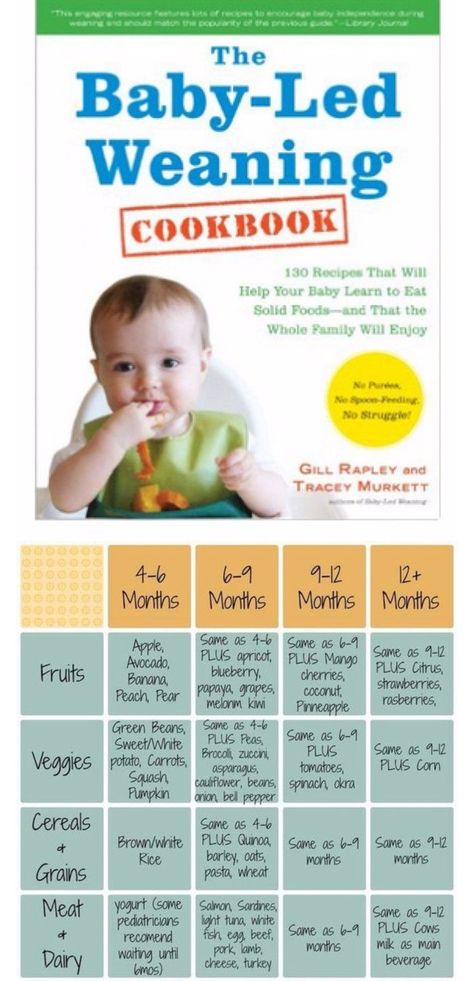 And if there is too much incomprehensible going on in the world around him, it is necessary to leave him this piece of calm.
And if there is too much incomprehensible going on in the world around him, it is necessary to leave him this piece of calm.
Previously, a nursing mother was often advised to wean her breasts by smearing her nipples with mustard, brilliant green, etc., so that the child himself would refuse it. This is dangerous both for mother's health and for the health of the baby, both for the physical (burn of the oral mucosa and even the esophagus), and for the psychological, because the mother's breast is the personification of calmness and confidence.
Fifth rule: First we remove unimportant feedings for the baby.
Often, mothers try to get rid of night feedings, which are often especially difficult. But for a child, they are very important and it will be very difficult for him to refuse them. But it is much easier to refuse daytime intermediate feedings without being tied to sleep. Especially if mom finds something to replace them with: hugs, reading books, playing puzzles, hide and seek, etc.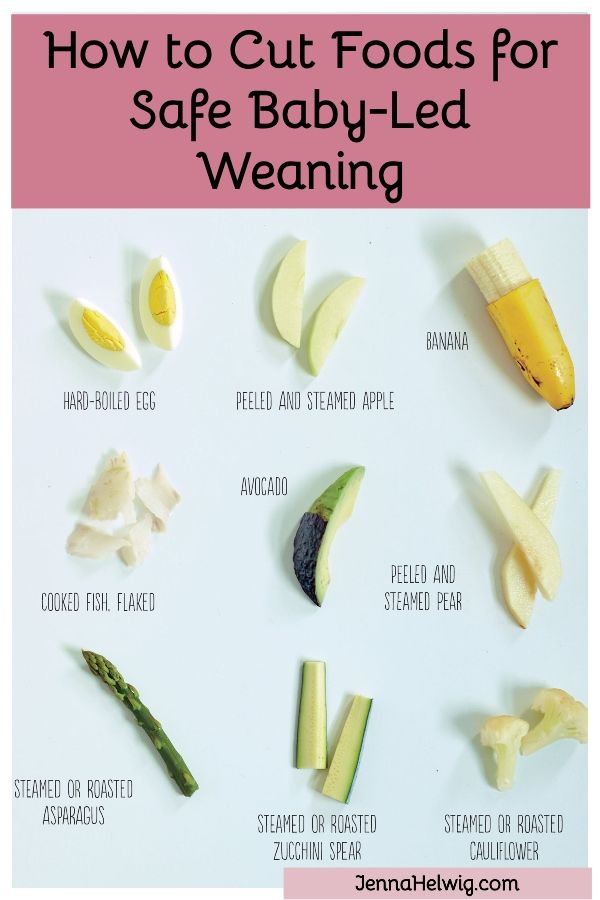
Trying to replace nighttime feedings with a bottle of milk or sweetened water can lead to cavities and other problems. If you refuse night feedings, replace them for your baby with drinking ordinary plain water, preferably from a cup.
Rule six: No drugs unless recommended by a doctor!
Even if there is no milk in the breast, this does not mean that the baby will not ask for it. After a year, children need breastfeeding not so much for milk, but for bodily and emotional contact with their mother. If the baby sucks on an empty breast, the mother experiences sensations that are not very pleasant.
Rule seven: Consensual excommunication.
This is perhaps one of the most important rules. Even if you are doing everything right, but you notice that the child has begun to sleep worse, is more naughty, asks for pens more often, etc. - this may be a sign that the weaning pace you have chosen is not suitable for him. Everything happens too fast for him. Slow down, for two or three days they won’t do the weather for you, and the baby will be given a basic level of trust in the world and you.
Slow down, for two or three days they won’t do the weather for you, and the baby will be given a basic level of trust in the world and you.
The hardest part about weaning is the feeling that it will never end. But this is the wrong approach to the process. Breastfeeding is a wonderful milestone in the mother-baby relationship and they need to enjoy and enjoy it, gradually learning new ways of communicating and teaching the baby to enjoy the mother outside of the context of the breast. Believe me, the moment will come when you will fondly remember all those moments of intimacy with the baby when you sat with him in a rocking chair and breastfed him. Do not push the child, and he will let you go earlier.
Remember that all children and all mothers are different. It is impossible to come up with a single recipe and scenario for weaning for everyone. One baby himself refuses the breast, for another it will be a long and difficult process. But at the same time, mom needs to adhere to the basic rules.

